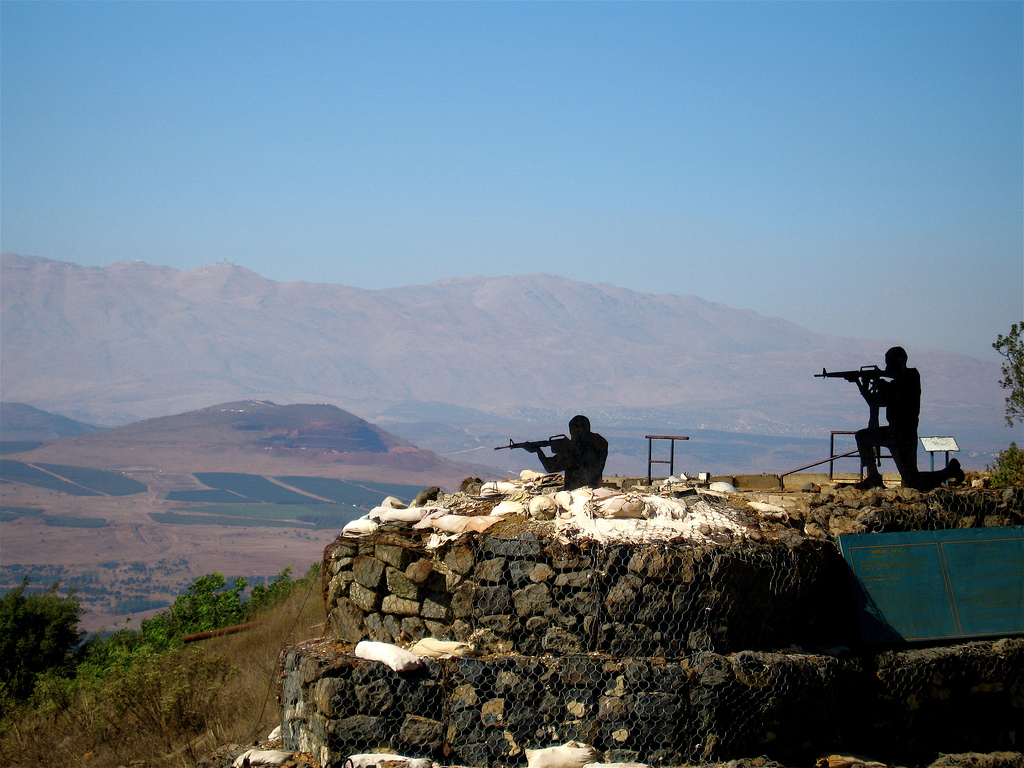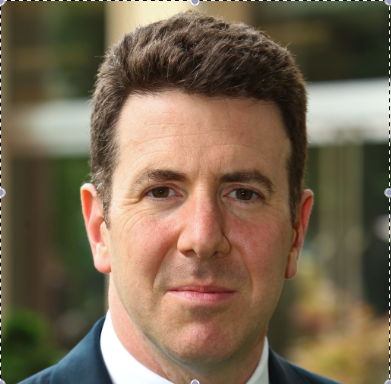Another War in Lebanon?
Israel and the Lebanese Hezbollah spar regularly, and Hezbollah’s intervention in the Syrian civil war expanded their conflict’s front line. In the years since the war began in 2011, Israel has attacked Hezbollah weapons depots and forces in Syria, and Hezbollah boasts that it shot down an Israeli F-16 jet. A senior U.S.

Published by The Lawfare Institute
in Cooperation With

Israel and the Lebanese Hezbollah spar regularly, and Hezbollah’s intervention in the Syrian civil war expanded their conflict’s front line. In the years since the war began in 2011, Israel has attacked Hezbollah weapons depots and forces in Syria, and Hezbollah boasts that it shot down an Israeli F-16 jet. A senior U.S. intelligence officer cautions that there is “real potential” of a war between Israel and Hezbollah and that such a war could drag in Iran and other regional powers. Mara Karlin, a leading outside analyst, contends that war is “almost inevitable” and that the “real questions are how and where—not if—the impending conflagration will occur.” Hezbollah’s leader, Hassan Nasrallah, also warns that Israel is always a threat to Lebanon and Hezbollah. Yet war has threatened for over a decade, and despite regular sparring, neither side has gone over the brink. What explains this enduring, if turbulent, peace—and will it last?
The risks for Israel in Lebanon are far higher than in its periodic battles with Hamas in Gaza. In 2006, Hezbollah launched a cross-border raid, killing three Israeli soldiers and capturing two. The raid sparked a massive Israeli bombing campaign and then ground assault, much to Hezbollah’s surprise. Hezbollah, however, was prepared for a fight and kept the rockets falling on Israel throughout the 34-day conflict. The war ended in a draw. Hezbollah and Nasrallah were lauded throughout the Arab world for their successful defiance of Israel.
More than 10 years later, Hezbollah’s military capabilities are even more formidable. It has over 100,000 rockets and missiles and can fire over 1,000 per day, targeting almost every major city in Israel. Hezbollah also manufactures weapons in Lebanon, producing drones and guided missiles, amongst other systems. In the past, Hezbollah rockets had crude guidance systems and mostly landed on Israeli fields or other unpopulated parts of the country. Now, however, Hezbollah has systems, like the Fateh-110, that use advanced guidance systems. If another conflict were to break out, Israel would face the potential loss of power plants, its airport, key political and cultural sites, and other grave threats. Israel’s layered missile-defense and anti-rocket systems like Iron Dome and David’s Sling will offer some protection, but they would be tested by the scale and scope of Hezbollah’s arsenal.
Politically, Hezbollah is also secure. In the May 2018 parliamentary elections, Hezbollah won additional seats, and its power grew at the expense of Prime Minister Saad al-Hariri, the leader of Lebanon’s Sunni Muslims. Hezbollah already had a de facto veto over government decisions in Lebanon, and its strong election performance further strengthens it.
The biggest difference for Hezbollah since 2006 is its participation in the Syrian civil war, a source of both strength and weakness. Hezbollah sent thousands of fighters to Syria, and they played a major role in shoring up the Assad regime. In Syria, Hezbollah also gained and imparted valuable skills. Hezbollah fighters learned to work with Russian air power, use tanks, and even do a small airborne operation. They acquired an array of more conventional systems, from T-72 tanks to infantry fighting vehicles. Group members taught taught reconnaissance and weaponry skills to Syrian forces as well as to the Afghans and Pakistanis that Iran also sent to fight in Syria. In addition, Hezbollah indoctrinated its trainees with its revolutionary and anti-Israel message. Indeed, Syrian forces even recruited Hezbollah members as commanders. Having blooded fighters and tested commanders makes Hezbollah stronger.
Yet while Hezbollah is more formidable due to its experience in Syria, in other ways the group is weaker. Before the war, Hezbollah enjoyed some respect from Lebanon’s Sunni Muslim and Christian communities for its relative lack of corruption (compared with other Lebanese actors), ability to provide services effectively in areas it controlled, and steadfast opposition to Israel. Siding with the butcher Assad against the Sunni Muslim opposition, however, made Hezbollah look like an Iranian- and Syrian-controlled sectarian actor rather than an Islamic resistance force. For much of the Sunni Arab world, Hezbollah became the devil incarnate. Its support among Lebanese Shiites remains strong, but they bore the brunt of the casualties Hezbollah suffered in Syria—at least 1,400—and are not eager to fight another war that promises more bloodshed.
In addition, Hezbollah’s military endeavors in Syria would not necessarily prove useful to conflict with Israel. Hezbollah forces assaulted lightly armed and poorly trained rebels in many urban parts of Syria, but the skills learned would do them little good defending Lebanon’s south against well-trained Israeli forces. Although Hezbollah’s conventional capabilities are stronger than ever, employing them against Israel would prove disastrous. The group’s tanks would be death traps when fighting Israel’s superior forces, and if Hezbollah’s fighters fought in the larger formations they used for assaults in Syria, the Israeli air force and helicopters would devastate them.
Should war come to Lebanon, Hezbollah instead will seek to use its rockets and will focus its forces on defending this arsenal from Israeli air and ground attacks. It has dug over 1,000 tunnels and bunkers to hide its weapons and fighters. If Israel again invaded Lebanon to disrupt the rocket attacks, Hezbollah would try, as it did in 2006, to take advantage of south Lebanon’s steep valleys to force Israeli forces into narrow areas where they are vulnerable to attack. Israel, however, learned from its 2006 debacle and is far less likely to repeat the mistakes of the last war.
Given these military and political limits, Hezbollah is not eager to take on Israel. Although the group still nominally seeks the eradication of the Jewish state, it is well aware that this objective is not realistic. In the May 2018 elections, it campaigned on domestic issues, not the fight against its Zionist enemy. Indeed, its campaign slogan was “We will construct and we will protect”—a far cry from a new war with Israel. Moreover, Hezbollah’s Shiite rival, Amal, gained some seats in the May elections, playing up Hezbollah’s unpopular intervention in Syria. In sum, because Hezbollah wants to wield power in Lebanon, it is less likely to use the country as a theater for the fight against Israel, especially if it can do so in Syria instead.
Indeed, Israel sees Hezbollah’s strong political position in Lebanon as a vulnerability and as enhancing Israel’s deterrent powers. Given Hezbollah’s greater political influence after the 2018 elections and role in the Lebanese government, Israel is better able to hold the entire government responsible for any actions emanating from Lebanon and threaten massive retaliation there, an approach recently endorsed by Education Minister (and rising political force) Naftali Bennett. Israel can upset the Lebanese apple cart even without the massive bombing that characterized the 2006 war: Even small raids and other forms of lower-level military pressure would scare off investment and tourism.
This thinking, however, flies in the face of past U.S. policy, which sought to separate the Lebanese government from Hezbollah and to strengthen government forces. Since 2006, the United States has provided almost $2 billion in equipment to the Lebanese army and helped train its forces even though the Hezbollah remains an important part of the Lebanese regime. In addition, Israeli retaliation against Hezbollah strongholds would entail heavy civilian casualties, as Hezbollah’s forces are intermingled with Lebanon’s population. Although Israeli policymakers would blame Hezbollah for the inevitable damage of using human shields and the Trump administration would back them, the pictures of dead civilians would lead much of the world to blame Israel.
At least one area of policy uncertainty lies in Tehran. President Trump’s decision to scuttle the Iran deal gives the Islamic Republic less of a stake in preserving regional order. On the other hand, however, Tehran’s leaders may fear that Trump’s decision is a prelude to war and want to avoid ratcheting up tensions. Hezbollah’s future role in Syria also remains a question mark. When Syria was strong and Lebanon was weak, the Assad regime harassed Israel from Lebanese territory, using proxies there to keep the fight against Israel far from its home. However, now the table has turned, with Hezbollah and Iran playing a major role in Syria (and eliciting Israeli strikes on Syrian turf), it may prove difficult to keep the Syrian and Lebanese theaters distinct. Israel has to worry that the Syria and Lebanon fronts will merge in a crisis—a “northern war,” as Israeli officials describe it.
The most likely result is that Israel and Hezbollah will maintain a violent peace. However, as happened in 2006, miscalculation and provocations might lead to unexpected escalation. Even a conflict that begins in Syria may not stay confined there. Both sides are prepared for war this time—should it occur, conflict is likely to be painful for all concerned.





